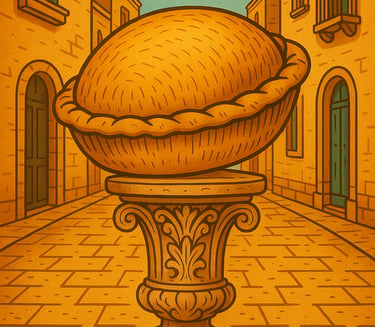feel the Salentiveness
Galatina – Where Baroque Lost Its Mind (and Gained Our Appetite)
Welcome to Galatina, a town that might not be on every tourist map—but maybe that’s because the locals want to keep it all to themselves. Here, between twisted columns and hypnotic frescoes, history meets hysteria, and dessert becomes religion.
6/9/20251 min read


🕍 The Basilica That Went All In
Forget minimalism. The Basilica of Santa Caterina d’Alessandria is what happens when Gothic, Byzantine, and a bit of creative madness all meet for lunch.
From the outside, it’s already impressive—but step inside and you’re hit by a wave of frescoes so intense, your brain forgets it ever liked clean white walls.
Saints, demons, plants, geometric patterns—it’s as if the entire medieval Pinterest board exploded on the ceiling. And we love it.
💃 The Tarantate: Dance or Exorcism?
Galatina has another claim to fame: it’s the spiritual home of the “tarantate”—women who were supposedly bitten by a tarantula and entered a trance-like state, cured only by music and dance.
Sound wild? It was. They’d gather at the Chapel of St. Paul, drink from the sacred well, and dance like their lives depended on it (because they kind of believed they did).
Today, it’s folklore. Back then, it was Tuesday.
🥐 The Pasticciotto Was Born Here (Yes, Really)
You’ve probably eaten a pasticciotto in Lecce or Otranto, and it was amazing. But make no mistake: Galatina is the birthplace of this custard-filled miracle.
According to legend, it was invented in the early 1700s by a baker who had leftover pastry dough and cream. That baker was clearly a genius.
The rest is (delicious) history.
Today, you can still eat the original pasticciotto at Pasticceria Ascalone, where it all began. Pro tip: one is never enough
.Galatina is not just another baroque town.
It’s a place where walls speak in colors, where music once healed madness, and where dessert was elevated to heritage.
Come hungry. Leave inspired.


